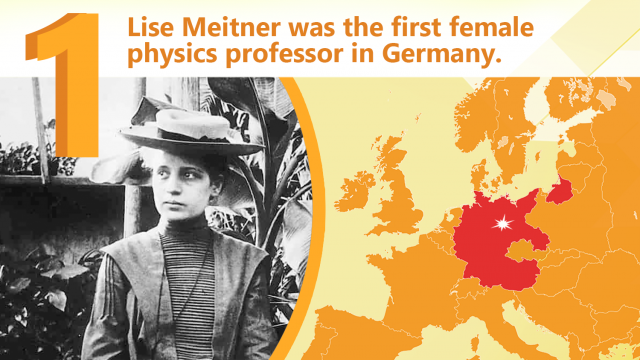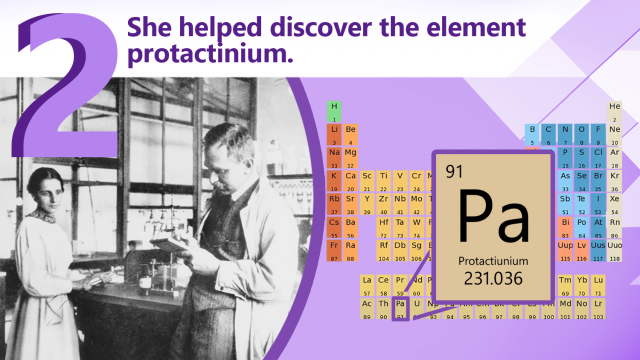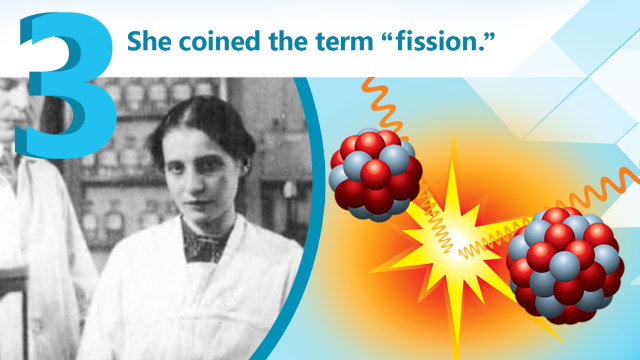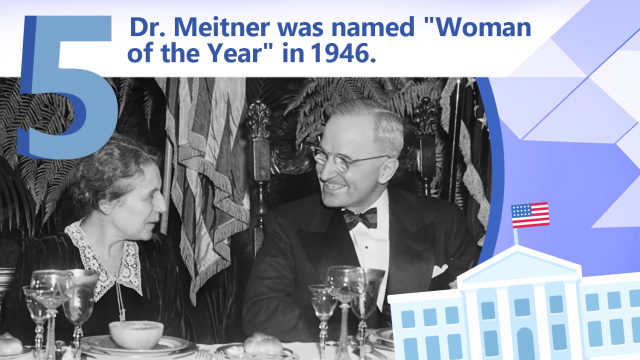Women in Radiation History: Lise Meitner
Lise Meitner helped discover the radioactive element protactinium, and was the first to describe and coin the term “nuclear fission” in a scientific paper. She was the first woman physics professor in Germany. The rise of the Nazis forced Dr. Meitner to flee Germany because of her Jewish ancestry. Her name was left off scientific papers in Nazi Germany. She continued her work in Sweden. Having overcome so many obstacles in life, Dr. Meitner actively supported women in science for the rest of her career. In 1997, element 109 was named in her honor: meitnerium.
This page on Lise Meitner is part of the Women in Radiation History section of RadTown.

Born: November 7, 1878, Vienna, Austria-Hungary
Died: October 27, 1968, Cambridge, United Kingdom
Awards: Enrico Fermi Award, Max Planck Medal, Lieben Prize, Otto Hahn Prize for Chemistry and Physics
Education: University of Vienna
Field of Study: Nuclear Physics
Career: Kaiser Wilhelm Institute, Royal Swedish Academy of Sciences
Five Facts about Lise Meitner
Click on the blue arrows below to discover five facts about Lise Meitner's distinguished career.
-

In 1926 Lise Meitner became the first female professor of physics in Germany. Because she was Jewish, her physicist friends helped sneak her out of Nazi Germany. She continued her work in Sweden at the Nobel Institute for Experimental Physics. Dr. Meitner never returned to Germany.
-

Dr. Meitner and her longtime collaborator Otto Hahn, helped discover a stable form of protactinium, which is a scarce and highly radioactive element. They were searching for the undiscovered element 91 on the periodic table. Protactinium means “before actinium,” because actinium is formed from the radioactive decay of protactinium.
-

Lise Meitner and her colleagues found that uranium atoms split when bombarded with neutrons. The splitting of atoms releases a large amount of energy. Dr. Meitner was the first to describe this process as nuclear fission. Nuclear power plants and nuclear bombs use nuclear fission. The Nobel Prize committee overlooked her essential work for this discovery.
-

Because girls were not allowed higher education, Lise Meitner’s family got her a private tutor when she was 14. She went on to be one of the first women to earn a doctorate from the University of Vienna. She received lower pay and less recognition compared to her peers. She spent the last half of her life traveling and speaking to women students.
-

In 1946, Dr. Meitner was named "Woman of the Year" by the Women's National Press Club in Washington, D.C. She had dinner with President Harry Truman. President Truman commented, “So you’re the little lady who got us into all of this," because he mistakenly thought that she worked on the atomic bomb. Lise Meitner refused to work on a bomb.
Remix of "President Harry S. Truman with Dr. Lise Meitner." International News Service Harry S. Truman Library.
